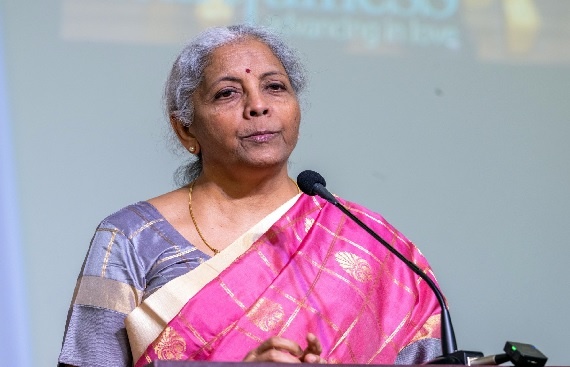
Central Government Employees to Benefit from New Pension Framework
The Indian government has confirmed it has no intention of reinstating the Old Pension Scheme (OPS) for central government employees, instead opting to enhance retirement benefits through the Unified Pension Scheme (UPS). Finance Minister Nirmala Sitharaman clarified during a parliamentary session that the National Pension System (NPS), a defined contribution model, will remain in place for employees joining government service after January 1, 2004. This decision addresses longstanding debates over the sustainability of the OPS, which was phased out over two decades ago. While employee unions and some state governments had advocated for its revival, citing concerns over retirement security, the government has instead introduced UPS as a more financially viable alternative. The new framework aims to balance fiscal responsibility with improved pension guarantees, ensuring long-term stability for public sector workers.
Shift from Defined Benefit to Defined Contribution Model
The transition from the OPS to the NPS marked a significant shift in India’s pension architecture, moving from a defined benefit model to a defined contribution system. Under the OPS, employees received a fixed pension based on their salary and years of service, whereas NPS operates on an individual account basis, with contributions invested to generate retirement funds. Despite its efficiency, the NPS faced criticism for offering less predictable retirement income. To address these concerns, the government established a committee led by the former Finance Secretary to explore reforms. The resulting UPS integrates elements of the OPS, providing guaranteed retirement benefits while adhering to fiscal constraints. This hybrid approach ensures employees receive a structured pension, even as the government maintains control over financial sustainability.
UPS Benefits and Eligibility Criteria
The Unified Pension Scheme introduces tiered benefits tailored to employees’ service tenure. Under the new framework, employees with at least 25 years of qualifying service will receive a guaranteed pension of 50% of their average basic pay from the last 12 months of employment. For those with shorter service periods, the pension amount is proportionally adjusted, ensuring equity without compromising fiscal discipline. Additionally, UPS participants will be eligible for enhanced benefits under the CCS (Extraordinary Pension) Rules, 2023. These provisions cover scenarios such as death, disability, or invalidation during service, offering financial support to employees and their families. This comprehensive support structure aims to provide security not only in retirement but also during unforeseen circumstances, reinforcing the government’s commitment to employee welfare.
Implementation and Government Rationale
The UPS was officially notified on January 24, 2025, allowing NPS-covered employees to opt for the new pension framework. This decision aligns with the government’s broader strategy to modernize public sector benefits while maintaining fiscal responsibility. By introducing a defined benefit structure within the NPS, the government seeks to address concerns about retirement insecurity without the financial burden associated with the OPS. The move also reflects efforts to align pension policies with global best practices, ensuring long-term sustainability. Employees are now encouraged to evaluate the UPS as a viable alternative to the NPS, with the flexibility to choose based on individual needs and circumstances. This reform underscores the government’s focus on balancing employee welfare with economic prudence in the evolving pension landscape.
Broader Implications for Pension Reforms
The introduction of UPS marks a pivotal moment in India’s pension reform journey, reflecting the government’s commitment to innovation and fiscal accountability. By eliminating the OPS and offering a structured alternative, the administration aims to create a more resilient pension system that meets contemporary challenges. The decision also highlights the importance of stakeholder engagement, as consultations with employees and experts shaped the reform. While some may view the absence of OPS as a setback, the UPS represents a forward-looking approach that prioritizes long-term stability. As the government continues to refine pension policies, the UPS serves as a model for balancing employee needs with economic realities, setting a precedent for future reforms in the public sector.





